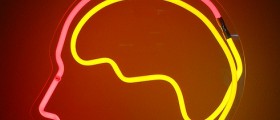
Vascular diseases affecting the brain are known under the name cerebrovascular diseases. Many blood vessels of the brain may be affected with different changes and various conditions.
Vascular Problems in the Brain
In the majority of cases there is clear damage to the lining of the affected blood vessels and endothelium which exposes the collagen and allows platelets to accumulate and start the process of reparation which is sometimes imperfect. Hypertension is the leading cause of damage to the lining of brain blood vessels. It actually leads to permanent changes of the architecture of brain blood vessels. As a result blood vessels of the brain become too narrow, deformed and may sometimes even rupture.
Vascular changes also occur in the form of insufficient blood supply to certain parts of the brain. This is generally associated with the process of atherosclerosis. The affected blood vessels become narrow due to build-up of plaque comprising many components, cholesterol and platelets being only some of them. Lack of blood supply is highly detrimental for brain cells that basically depend on uninterrupted oxygen supply and supply of glucose. Once the brain cells die, they cannot be replaced with new ones since the brains does not posses regenerative abilities.
Different Types of Cerebrovascular Problems
There are several types of cerebrovascular disease. The most common are transient ischemic attack and stroke. Subarachnoid hemorrhage and vascular dementia may also occur but are not frequently reported as the previous two. Finally, there are aneurysms and arteriovenous malformations.Transient Ischemic Attack (TIA)Transient Ischemic attack is a cerebrovascular disease characterized by symptoms that do not last long, approximately a few minutes. There is no permanent damage to the brain. TIA is a consequence of transient blockage of some brain blood vessel. The area supplied with the affected blood vessel becomes deprived of oxygen but since the blood flow is soon restored brain cells are not irreversibly damaged.
The symptoms and sign of transient ischemic attack may vary a lot, depending on the affected part of the brain. For instance, some patients complain about facial weakness, visual impairment, loss of coordination and balance while others may experience mild confusion along with severe headache.In spite of not being highly detrimental for the brain, transient ischemic attack may be only an introduction to a more complex condition known as stroke.StrokeStroke occurs when interrupted blood flow to certain area of the brain takes place. Unlike TIA, insufficient blood supply lasts longer, sufficiently enough to cause permanent damage to the affected parts of the brain. Stroke is classified into hemorrhagic and ischemic stroke. In hemorrhagic stroke there is bleeding and leakage of blood into the brain tissue. The affected area stops receiving oxygen and soon undergoes permanent changes and complete loss of certain functions. In ischemic stroke there is a blockage of some brain blood vessels. The blood clot, in this case, does not allow blood to reach specific parts of the brain and this eventually leads to same effects as in case of hemorrhagic stroke. Namely, the portion of the brain deprived of blood loses its functions.
There is a whole range of symptoms and signs of stroke. However, the are not transient and patients mostly suffer permanent neurological sequelae.Subarachnoid HemorrhageThis is a cerebrovascular disease and is also considered only one potential cause of stroke. In case of subarachnoid bleeding the blood leaves the damaged blood vessels and accumulates on the surface of the brain. The blood actually originates from the arteries running underneath the arachoid, one of the three membranes covering the brain and spinal cord. In the majority of cases subarachnoid hemorrhage develops due to rupture of an aneurysm. Furthermore, it is also triggered by severe head injury and may develop as a complication of arteriovenous malformations.Vascular DementiaVascular dementia is only one type of dementia which is actually a serious loss of cognitive ability in previously unimpaired individual. In such patients there is ongoing decline of various brain functions such as thinking, understanding, judgment, language and memory. This type of dementia is the second most reported form of the disease, staying close behind Alzheimer's disease. In the majority of patients vascular dementia is closely connected with transient ischemic attack, stroke or a silent brain infarction.AneurysmsAneurysms may affect each and every blood vessels in the body. Brain aneurysms are always considered serious issue since they may easily rupture and cause severe bleeding (hemorrhagic stroke). An aneurysm is actually localized bulging of the wall of the blood vessels (predominantly artery). The wall of the aneurysm is weak and and cannot withstand drastic changes or prolonged increase in blood pressure.Arteriovenous MalformationsAn arteriovenous malformation is the term used for an abnormal connection between blood vessels, to be more precise between an artery and a vein. It basically affects the blood vessels of the brain, may be completely asymptomatic or cause certain health problems. Malformations of this type are inherited. They may easily rupture and cause severe and potentially life-threatening bleeding. This is why they are supposed to identified in time and treated properly.













-Disease-Cause-A-Stroke_f_280x120.jpg)



Your thoughts on this
Loading...